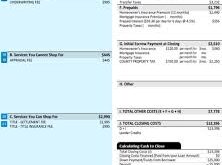Mortgage Payment Structure: Works and Optimizing Payments. Buying a home is a significant financial commitment, and understanding the mortgage payment structure is crucial to making informed decisions. A mortgage payment consists of several components that impact how much you pay monthly and how quickly you can pay off your loan. This guide will explain the structure of mortgage payments, how they work, and strategies to optimize your payments.
What is a Mortgage Payment Structure?
A mortgage payment structure refers to how your monthly mortgage payment is divided into different components. These components typically include principal, interest, taxes, and insurance (PITI). Understanding these elements can help you manage your finances better and reduce your loan burden over time.
Components of a Mortgage Payment
1. Principal
The principal is the amount of money you borrowed from the lender. It decreases as you make payments over time. A larger portion of your payment goes toward interest in the early years, while more goes toward the principal in later years.
2. Interest
Interest is the cost of borrowing money from the lender, expressed as a percentage of the loan amount. It depends on your mortgage rate and loan term.
3. Taxes
Property taxes are collected by local governments and are often included in your mortgage payment. The lender holds these funds in an escrow account and pays your property taxes on your behalf.
4. Insurance
There are two main types of insurance that may be included in your mortgage payment:
- Homeowner’s Insurance: Protects against damage to your home.
- Private Mortgage Insurance (PMI): Required if your down payment is less than 20%.
How Mortgage Payments Are Calculated
Mortgage payments are determined by several factors, including loan amount, interest rate, and loan term. The most common formula used is: Where:
- M = Monthly payment
- P = Loan principal
- r = Monthly interest rate (annual rate / 12)
- n = Total number of payments (loan term in years × 12 months)
Types of Mortgage Payment Structures
1. Fixed-Rate Mortgage
A fixed-rate mortgage has a constant interest rate throughout the loan term, making it easier to budget.
2. Adjustable-Rate Mortgage (ARM)
An ARM starts with a lower interest rate that adjusts periodically based on market conditions.
3. Interest-Only Mortgage
Borrowers pay only interest for a specified period before principal payments begin.
4. Balloon Mortgage
A balloon mortgage has lower payments initially but requires a large final payment at the end of the term.
Strategies to Optimize Your Mortgage Payments
- Make Extra Payments: Paying more than the minimum can reduce interest and shorten the loan term.
- Biweekly Payments: Instead of monthly payments, pay half of your mortgage every two weeks to make an extra payment per year.
- Refinancing: Refinance to a lower interest rate to reduce monthly payments.
- Shorten the Loan Term: Opting for a 15-year mortgage instead of a 30-year loan can save money on interest.
- Avoid PMI: Make a 20% down payment to eliminate private mortgage insurance.
10 Tips for Managing Mortgage Payments
- Make sure your mortgage fits your budget.
- Set up automatic payments to avoid late fees.
- Keep an emergency fund to cover unexpected expenses.
- Monitor interest rate trends for refinancing opportunities.
- Pay down other debts to improve your credit score.
- Avoid borrowing against your home equity unnecessarily.
- Consider tax deductions related to mortgage interest.
- Review your loan statements regularly.
- Shop around for better homeowner’s insurance rates.
- Consult a financial advisor for the best mortgage strategy.
10 Frequently Asked Questions (FAQs)
1. What is the best mortgage payment structure?
The best structure depends on your financial goals. Fixed-rate mortgages offer stability, while ARMs provide lower initial rates.
2. How can I lower my monthly mortgage payment?
You can lower payments by refinancing, extending the loan term, or making a larger down payment.
3. What happens if I miss a mortgage payment?
Missing a payment may result in late fees, credit score drops, and eventually foreclosure.
4. Can I pay off my mortgage early?
Yes, but check with your lender for prepayment penalties.
5. What is escrow in mortgage payments?
Escrow is an account where lenders hold property tax and insurance payments on your behalf.
6. What is an amortization schedule?
It is a table showing how each payment is split between principal and interest over time.
7. Is it better to make extra principal payments?
Yes, extra payments reduce interest and help pay off your loan faster.
8. How does refinancing affect my mortgage?
Refinancing can lower your interest rate and monthly payments, but it may involve fees.
9. Can I change my mortgage payment schedule?
Some lenders allow biweekly or extra payments to help reduce debt faster.
10. How does my credit score impact my mortgage payment?
A higher credit score qualifies you for better interest rates, reducing your mortgage costs.
Conclusion
Understanding the mortgage payment structure is essential for homeowners looking to manage their finances efficiently. Your mortgage payment consists of principal, interest, taxes, and insurance, and knowing how these factors work together can help you optimize payments. By applying smart strategies such as extra payments, refinancing, and budgeting, you can reduce debt faster and save money in the long run. If you’re planning to get a mortgage or refinance your loan, be sure to explore all options and consult with financial experts to make the best decision for your future.
 mortgage.kbk.news
mortgage.kbk.news
